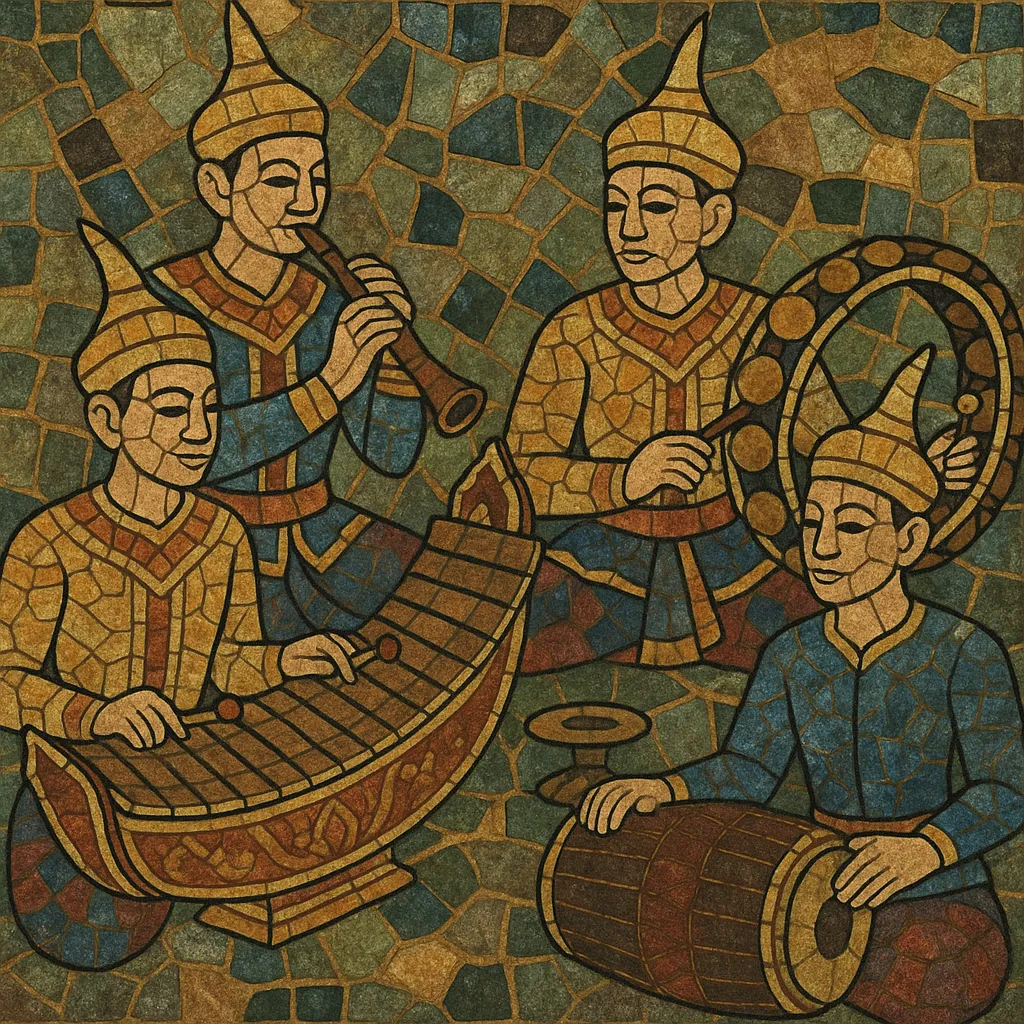Piphat is a foundational Thai classical ensemble style centered on pi (a double-reed oboe), xylophones (ranat), gong chimes (khong wong), and drums (taphon, klong), with time articulated by small cymbals (ching) and hand cymbals (chap).
It features heterophonic texture: all instruments follow the same melodic line but render it at different densities and ornamentation levels, creating a shimmering, interlocking sound.
Piphat ensembles accompany court and temple ceremonies, masked dance (Khon), dance-drama (Lakhon), and shadow play (Nang Yai), using cyclical rhythmic frameworks and modal-melodic patterns characteristic of Thai classical practice.
Variants include piphat mai khaeng (hard mallets, outdoor/ceremonial power), piphat mai nuam (soft mallets, more intimate color), piphat Mon (with Mon percussion color), and piphat nanghong (funerary repertory).
Piphat coalesced during the Ayutthaya period (16th–18th centuries), drawing on older Mainland Southeast Asian court-ritual ensembles and shared gong-chime traditions. The adoption of the pi nai (quadruple-reed oboe) as a leading voice, alongside xylophones and gong circles, gave the ensemble its distinctive timbre and ceremonial projection.
In the 19th century, under the Bangkok (Rattanakosin) court, piphat repertory, instrument making, and pedagogy flourished. Formalized ensemble types (mai khaeng/mai nuam) and specialized repertories for theater—Khon, Lakhon, and Nang Yai—emerged. Cyclical structures marked by ching patterns and taphon drum leadership were codified, while set pieces like Sathukarn (invocation) and Hom Rong (overture) framed ceremonial programs.
Master musicians and court/composer-pedagogues notated, arranged, and standardized core pieces and teaching lineages. Conservatories and the Fine Arts Department institutionalized training, ensuring continuity of tuning systems (seven nearly equidistant steps per octave), heterophonic practice, and repertorial cycles.
Today, piphat remains central to Thai classical culture—performed in national ceremonies, universities, and professional troupes. Ensembles adapt to modern stages and media, collaborate with dance and film, and occasionally fuse with contemporary genres while retaining core heterophony, cyclical rhythm, and ceremonial function.


